When thinking about characters, we always think the protagonist and antagonist, love interests, sidekicks, and other people who play major or minor roles in our story. We seldom think of the forgotten character: setting.
We think about setting in other ways. We consider the place and time as part of the framework of our stories. But a good setting does more than provide a stage where the story takes place. A good setting affects the story in all the ways a character does by providing conflict, plot elements, and all the emotions that accompany a relationship.
People react to our surroundings in complex ways, just like we do our personal relationships. We feel differently about the town where we grew up than we do about the places where we live later. And those who moved around a lot, for example in a military family, are affected by the lack of a real home town as much as the lack of a long-term childhood best friend.
A story set in say, Chicago, is going to be different than the same story set in Miami. The main plot points may be identical, but the landscape, the attitudes, the priorities, and the weather are different. All of those differences affect the human characters in the story.
The same is true of time. San Franciscans reacted to their surrounding differently in years just before the 1906 earthquake and fires than they did during the dot com boom or at the height of the AIDS epidemic.
All of this holds true as well in fictional worlds. The hobbits of The Shire are not the same as the hobbits of Bree. They have different concerns and are affected by their environments in very different ways.
When setting your story, think about how the time and location affect your character. It's one thing to to mention landmarks and other elements that set up the location. Those are very important. But equally important, and maybe more important, are the ways your character interacts with the other influences of a location. Research (or create) the outer elements of the location, but also look at the inner workings. What do the people think about? How do local politics and trends affect the way people live? How does a city's history affect the attitudes of its current residents? How does your main character react to his surroundings? Is your character a local who shares the inner feelings spawned by the place, or an outsider who finds the town foreign and has to deal with the shock of a different culture, or a newcomer who wants to fit in but has to fight the conflicting ideals of where he is from and his new town?
Treat time the same way, and consider not only the timepoint of the actual story but the time when the human characters were raised. Consider generational differences in attitudes, speech, and ideals and the problems that arise when those differences conflict with the human character's sense of self and how he fits in with the world.
Where we are, and when, are among the most powerful influences that tug at as as real people. The same is true of the people in your fictional worlds. As a result, time and place affect the emotional stories of your human characters as well as the external plots.
Setting is more than the stage. It's a real, breathing, living character that pervades every aspect of your story.
Viewing: Blog Posts Tagged with: location, Most Recent at Top [Help]
Results 1 - 4 of 4
Blog: Utah Children's Writers (Login to Add to MyJacketFlap)
JacketFlap tags: character, time, world building, setting, location, Add a tag
Blog: Game On! Creating Character Conflict (Login to Add to MyJacketFlap)
JacketFlap tags: Word for Windows, fiction, editing, writing, revision, craft, language use, proofreading, onomatopoeia, setting, location, sound effects, find and replace, word use, Add a tag
One of the most useful tools to utilize during the revision phase of your first draft is the Find and Replace tool. The instructions here are for Word for Windows, but a similar function should be available for other word processing programs.
1. If you do a quick rough draft you may have lots of blanks with placeholders **fill in here** or other placeholders (XXX) (#) for names, places, dates, locations, etc. Searching for ** or your placeholder cues will quickly take you from one placeholder to the next.
7. Use [Find] and [Replace] to change the name of a place or character. Use [Find Next] rather than [Replace All]. Why? Here's an example.
http://www.amazon.com/Story-Building-Blocks-III-Revision/dp/1475011369
http://www.amazon.com/Story-Building-Blocks-III-Revision-ebook/dp/B007SPPL68
Blog: Darcy Pattison's Revision Notes (Login to Add to MyJacketFlap)
JacketFlap tags: research, First Drafts, setting, location, google earth, on site, topography, Add a tag
NOW AVAILABLE! 30 Days to a Stronger Novel Online Video Course
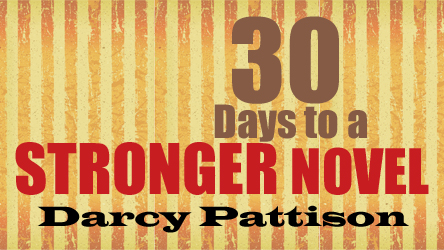
- Paperback Book Available now.
- Video Course Available now.
- Kindle PreOrder Now
- Kobo ebook PreOrder Now
Two years ago, I wanted to write a story set in Campinas, Sao Paolo, Brazil.
I had never been there.
I only knew the name of two people who lived there.
Yet, I could convincingly write about the setting. Here’s the secret.
Google Earth
The free app, Google Earth, is immensely helpful to writers. I use the free, desktop version.
View satellite imagery, maps, terrain, 3D buildings, galaxies far in space, and the deepest depths of the ocean.
In 2011, Google Earth added the street view. They send out cars that drive along a certain road and take a 360 view of the landscape. That means you can put Google’s orange man on the street and look around. Today, the street view is available on all seven continents. See more on the background, scope and how to use Street View.
WhereisTheGoogleCar.com asks people to take a photo of the Google car when they see it and post the picture. It’s a “social experiment” to track the location of the car(s) on any given day.
Thank You, Google Earth, for Helping Me Write!
GPS Coordinates: Context.
When I wrote Abayomi, the Brazilian Puma, about a mother puma who died in a chicken coop trap near Campinas, Brazil, I was lucky enough to have an incident report that included GPS (Global Positioning System) coordinates. Google Earth immediately zoomed me into the right position, so that I was visually hovering right above the chicken coop. The context of the coop was crucial: Brazil has increased sugar cane production for use in making ethanol for automobile fuel, and the coop was nestled amidst the sugar cane fields. Pulling out some, though, it was also apparent that the sugar cane plantations were very close to large urban areas. This wasn’t a remote rural area. Instead, the pumas lived within sight of skyscrapers. How did I know this?

Abayomi was recently named a 2015 National Science Teacher’s Association Outstanding Science Trade Book.
Google Photos: Visual Details.
Google allows users to upload photographs that are marked with GPS information. On the maps, these are shown as tiny rectangles that when clicked open up the photos. Very near the chicken coop was such a photo that showed a skyline of skyscrapers of the city of Campinas.
Google Street Man and Maps: Topography
Google Earth also allows you to see the topography, or the terrain, of a setting. Is it hilly, flat, or somewhere in between? You can use the Street Man or simply fly around. We have a friend from India who flew us–through the miracle of Google Earth–over his parent’s house in the foothills of the Himalayas.
Distances: Measuring the Earth
I love the extra tools of Google Earth,too. For example, you can use the ruler to measure distances in kilometers or miles. I learned, for example, that a drone in a story would have to fly about 5 miles–as the crow flies. Very valuable information! I can then answer so many questions:
- Is that within a drone’s range? Yes.
- How long would the flight take, figuring 50 mph? 6 minutes.
That gives my hero a very narrow time window to locate the villain and disable the drone.
Other Options
Google Earth has in impressive area of other specialities: historical maps, Mars, the Moon, 3-D buildings, favorite places, maps about climate change and much more. See the range of services at their showcase.
I’m researching Mt. Rainier for a story: through Google Earth, I’ve gotten context, followed trails, found fantastic photos, and almost feel like I’ve been there. No, I haven’t felt the wind on my face or heard the chatter of birds. I’m adding to the Google Earth info such things as the flora/fauna of the region. I’ve hiked other areas in the Pacific Northwest, and I’ve hiked in mountainous areas. I’m pretty confident that I’ll be able to recreate this landscape for a reader. It won’t hurt to have a beta reader from the area vet it for me, but I think it will be close. For me, Google Earth is the next best thing to being on-site myself. Add to that Flickr Photos that are Creative Commons licensed, and my story take on an added weight of reality.
(Click the photos to go to the original flckr.com sites.)
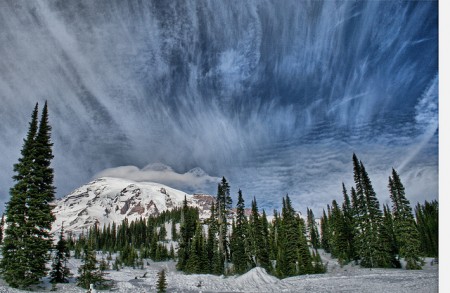
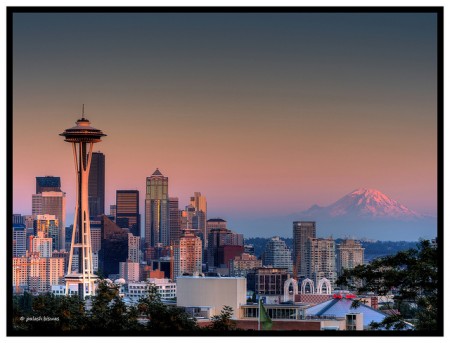
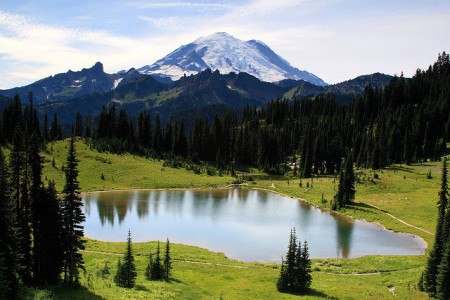
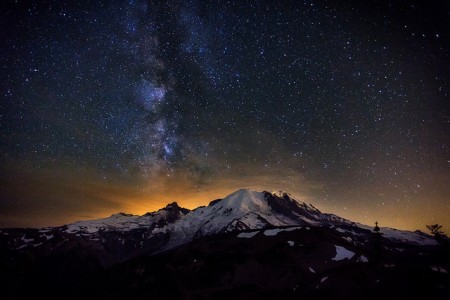
Blog: Game On! Creating Character Conflict (Login to Add to MyJacketFlap)
JacketFlap tags: craft, maps, scene, description, setting, howto, tours, location, pictures., fiction, writing, Add a tag



